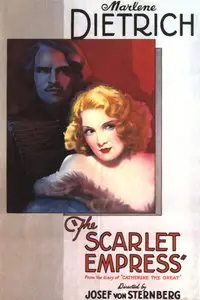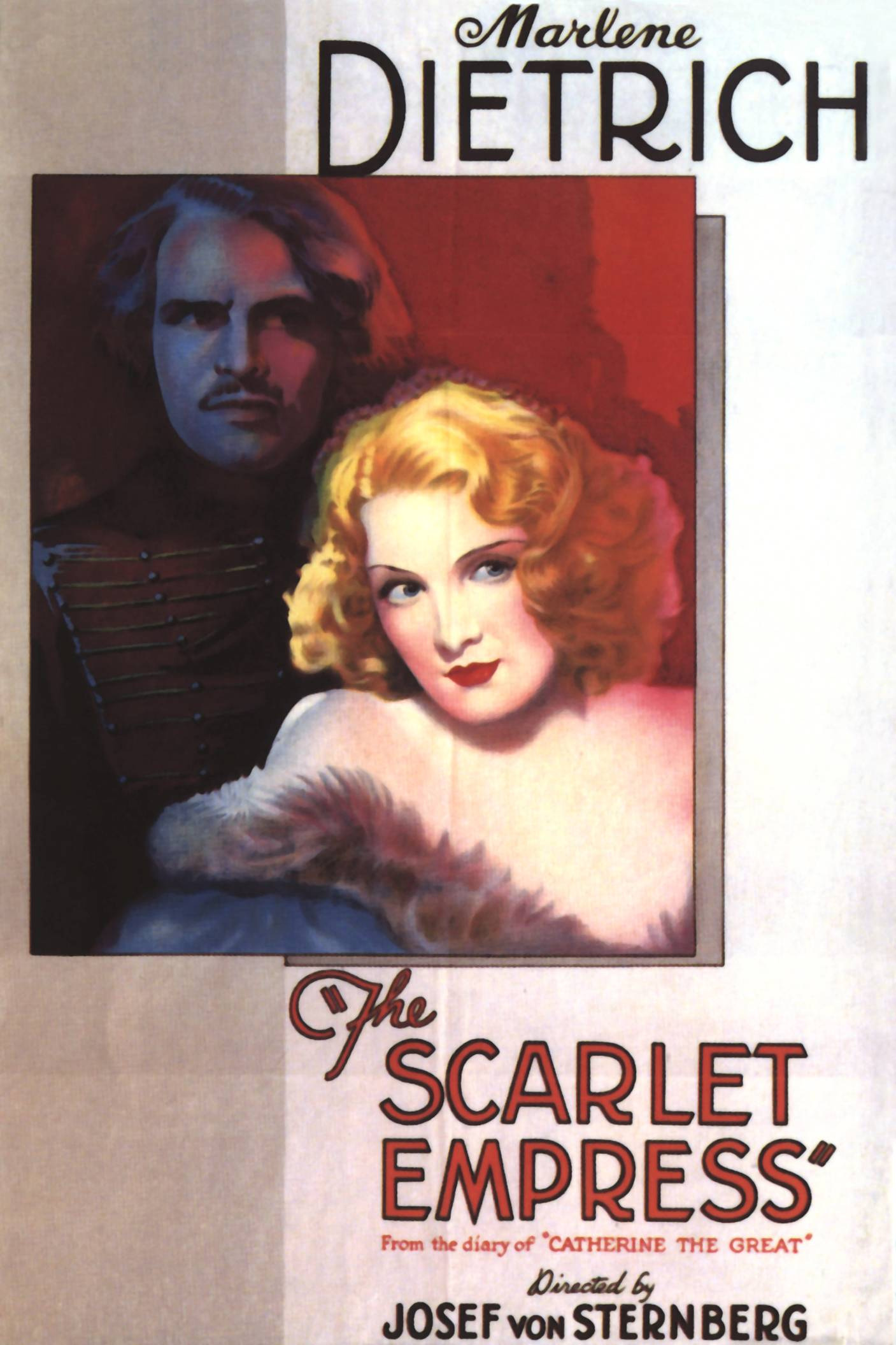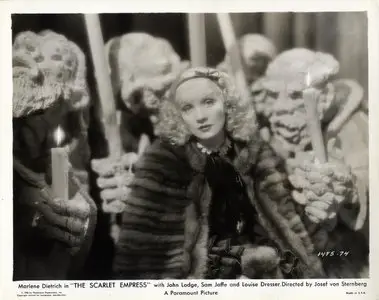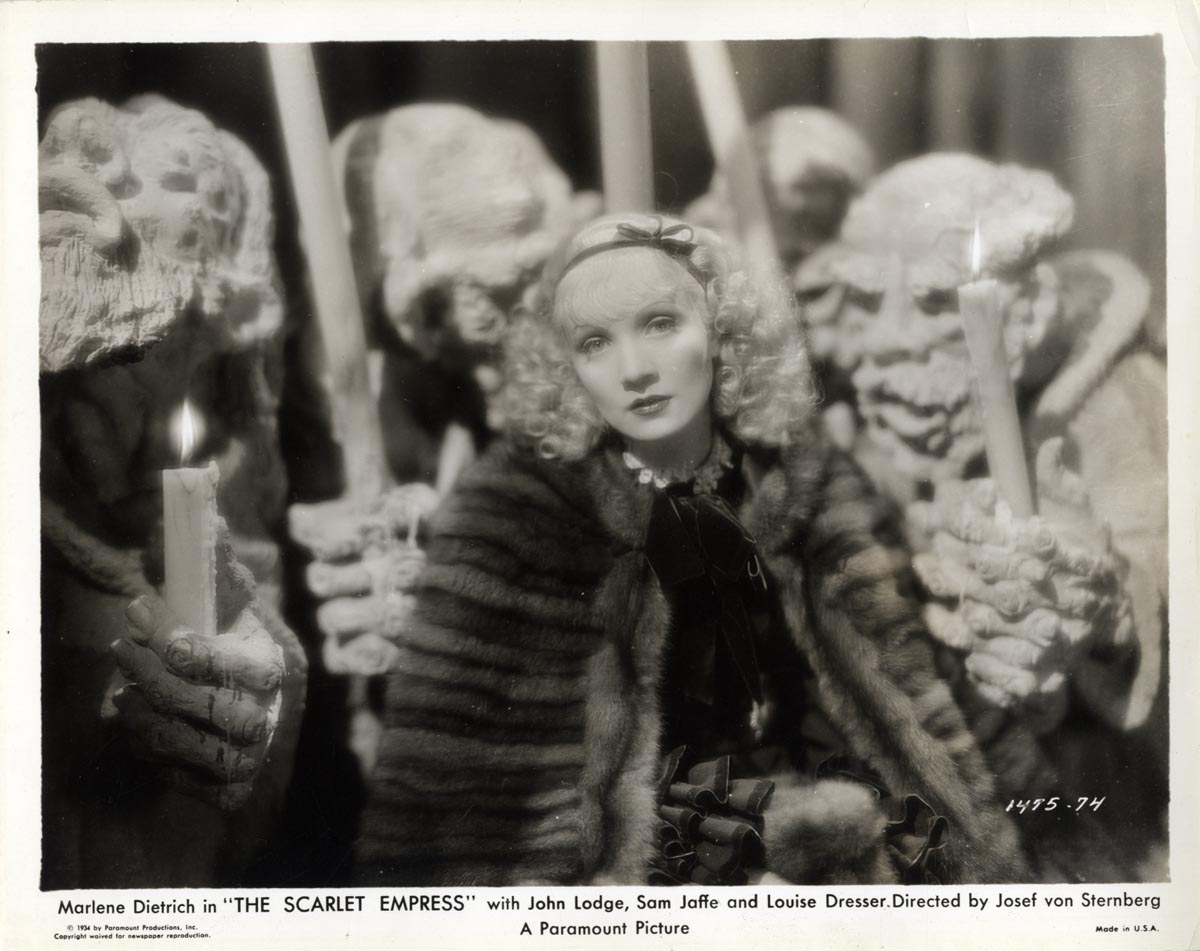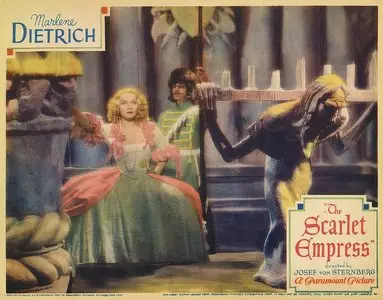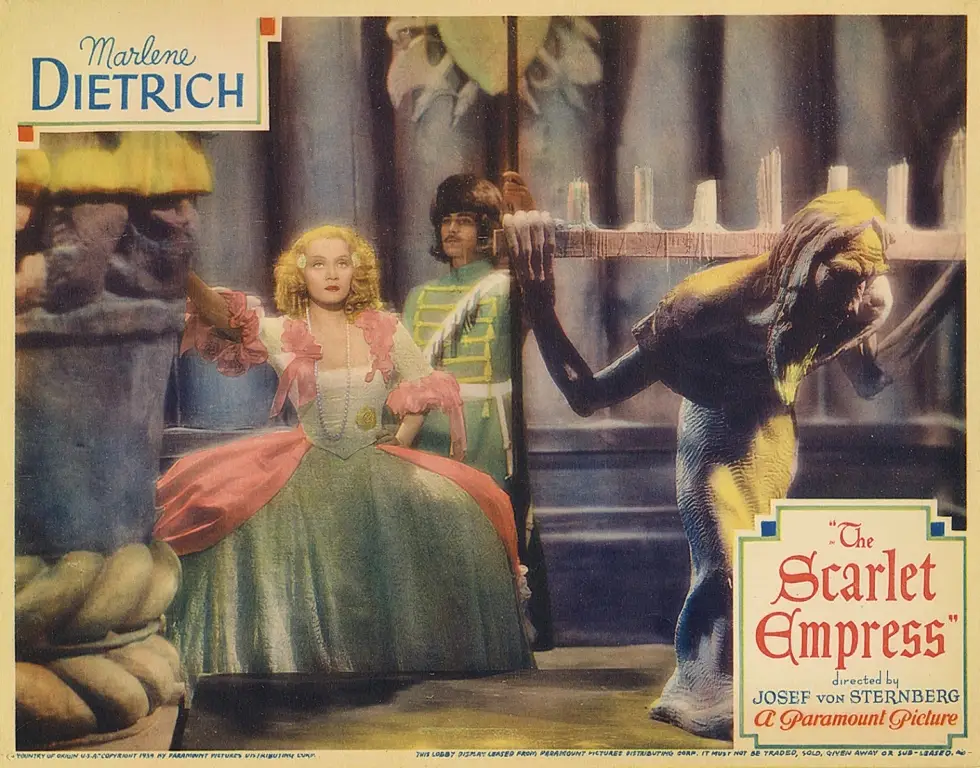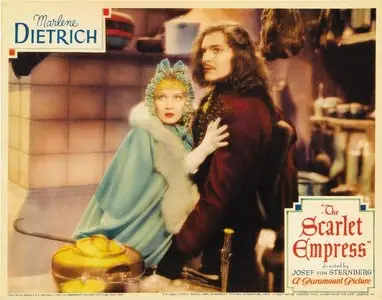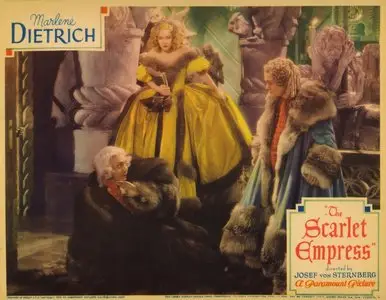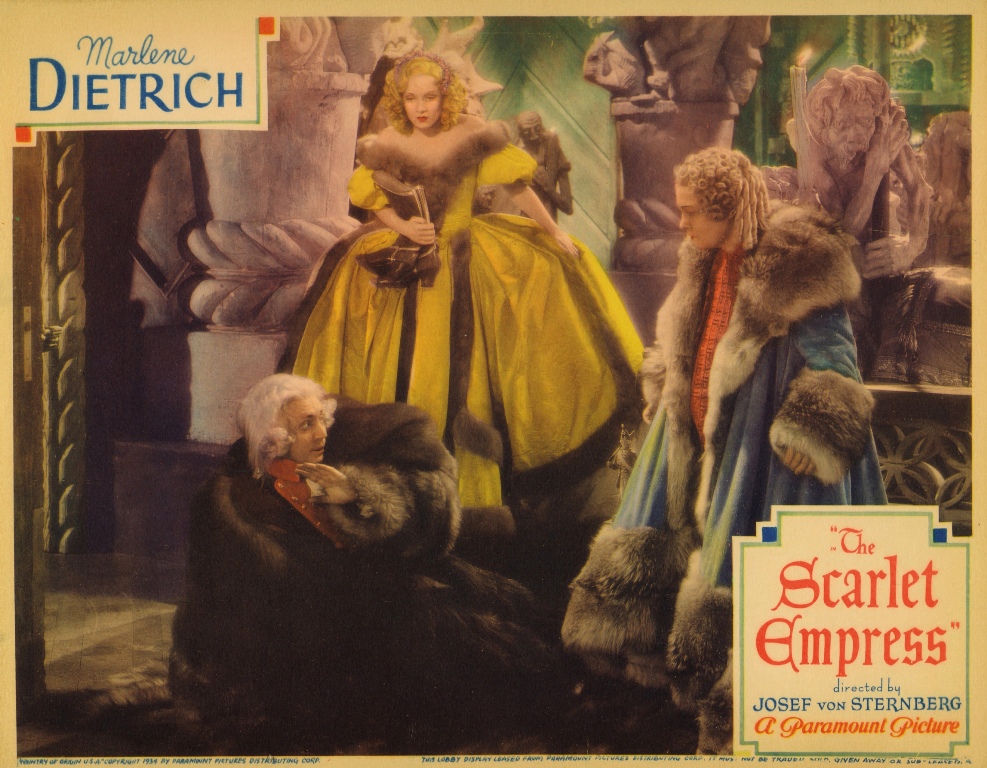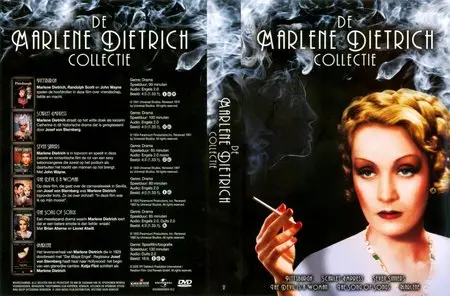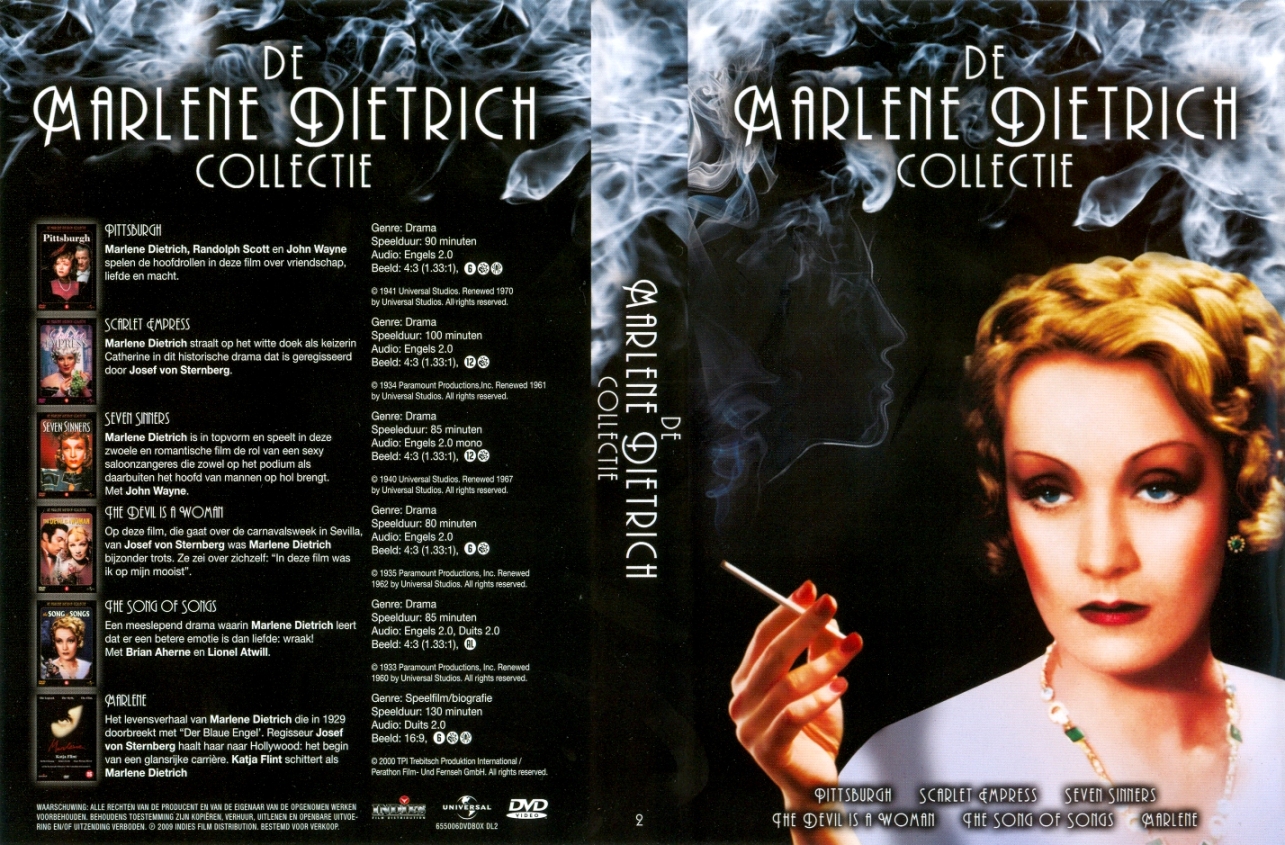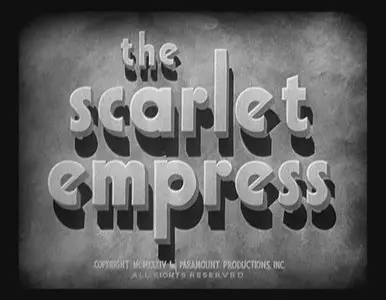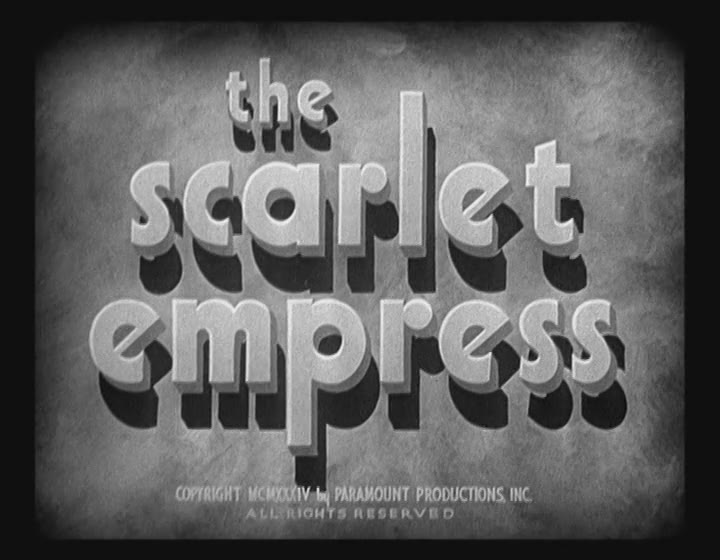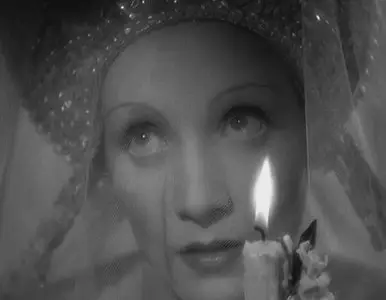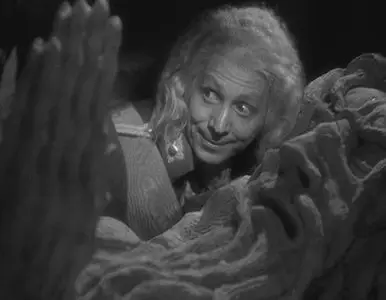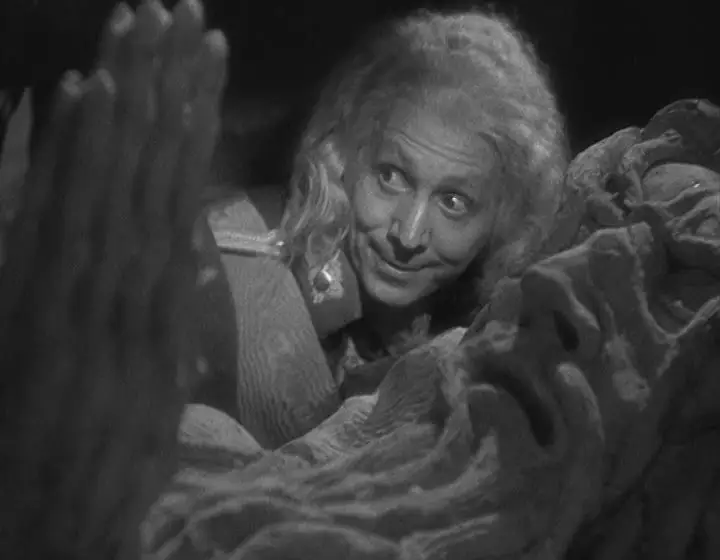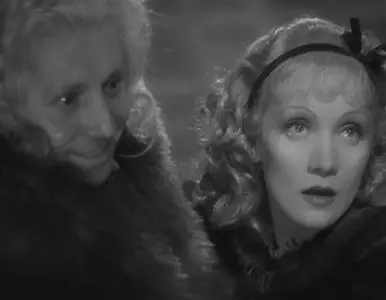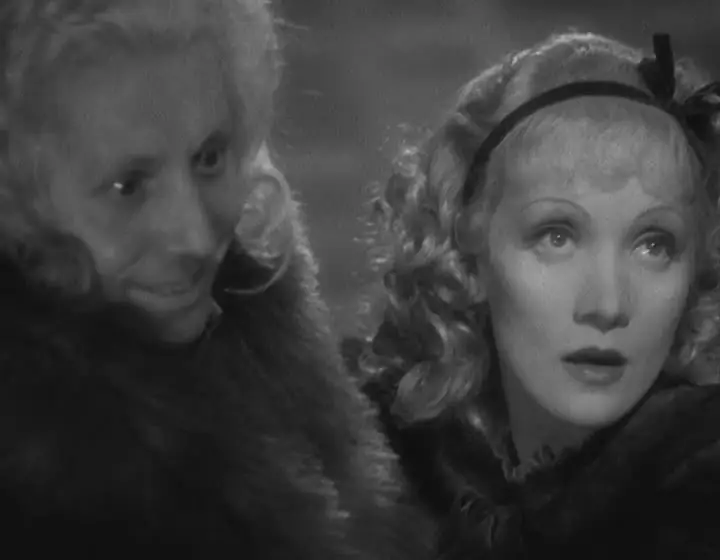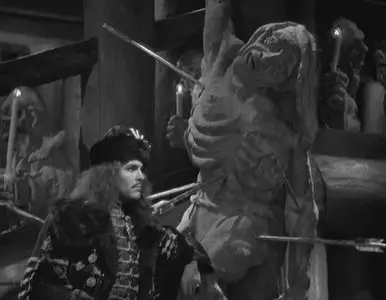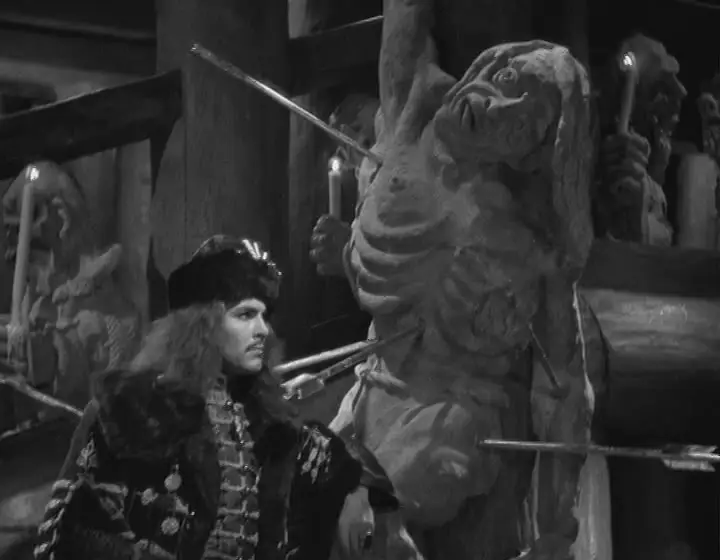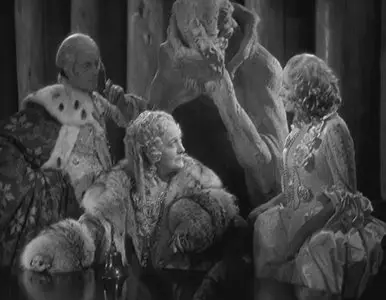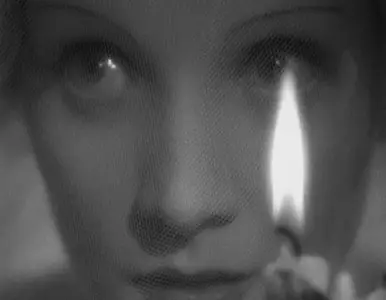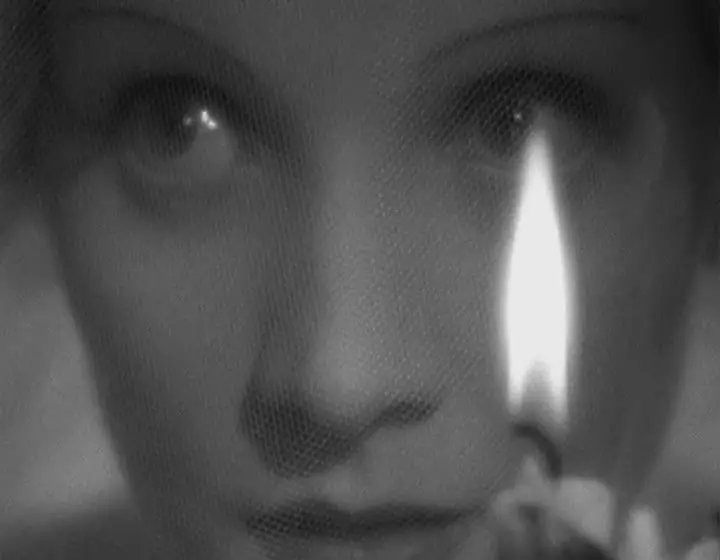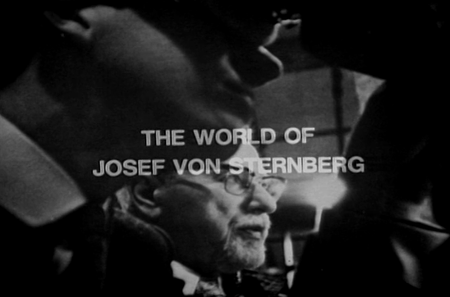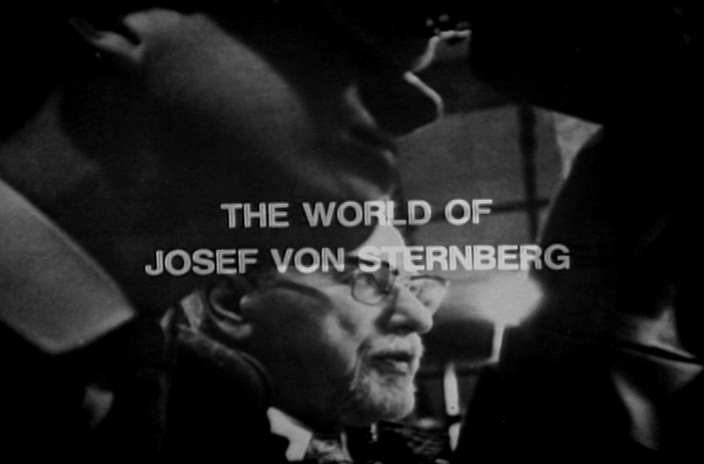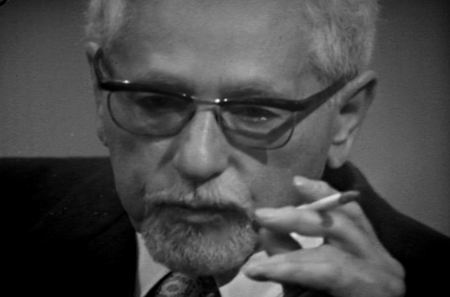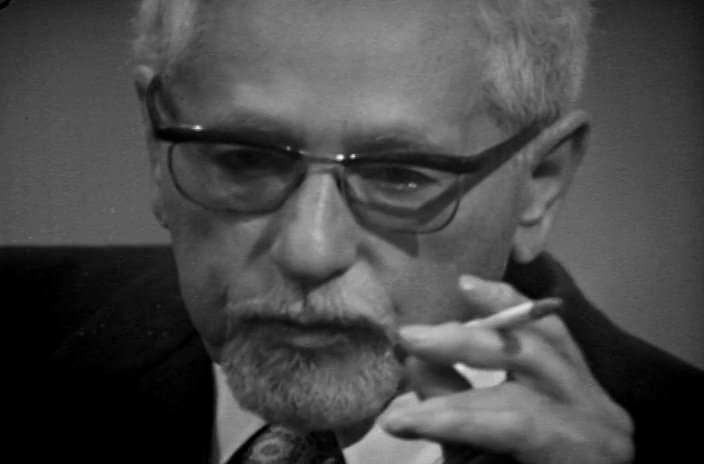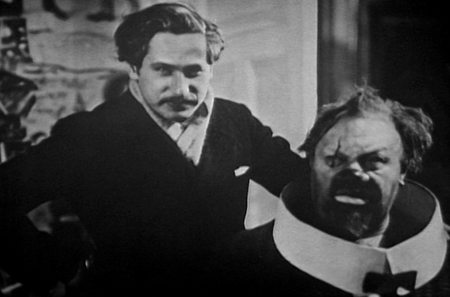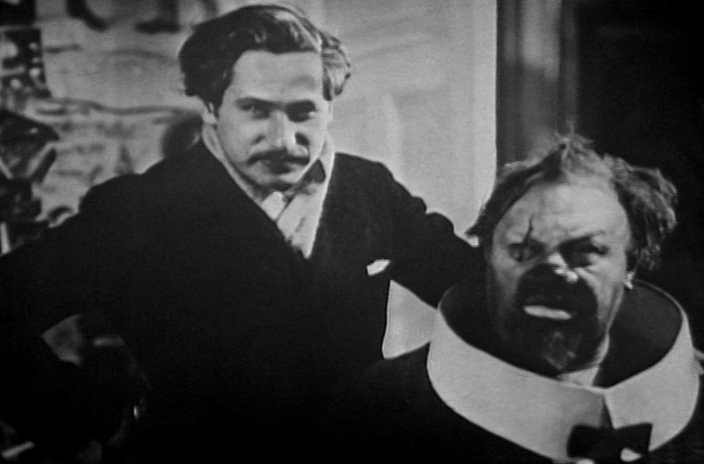Josef von Sternberg - The Scarlet Empress (1934)
DVD-Rip | MKV x264 at 2 050 Kbps | 720 x 560 (1.402) at 25.000 fps | AC-3 at 192 Kbps (2 ch) 48.0 KHz
Language: English | Subtitles: English, French, German, Others | Runtime: 1h 40mn | Size: 1.59 GB
Sourced from "De Marlene Dietrich Collectie" (Indies, 2009) | Director: Josef von Sternberg | Genres: Drama, History
Extras: The World of Josef von Sternberg (1967) - The Criterion Collection #109 | Runtime: 20mn | Size: 382 MB
Cast: Marlene Dietrich, John Lodge, Sam Jaffe
DVD-Rip | MKV x264 at 2 050 Kbps | 720 x 560 (1.402) at 25.000 fps | AC-3 at 192 Kbps (2 ch) 48.0 KHz
Language: English | Subtitles: English, French, German, Others | Runtime: 1h 40mn | Size: 1.59 GB
Sourced from "De Marlene Dietrich Collectie" (Indies, 2009) | Director: Josef von Sternberg | Genres: Drama, History
Extras: The World of Josef von Sternberg (1967) - The Criterion Collection #109 | Runtime: 20mn | Size: 382 MB
Cast: Marlene Dietrich, John Lodge, Sam Jaffe
Film Essay by Robin Wood @ criterion:(*)
The Scarlet Empress was the sixth of Josef von Sternberg’s seven collaborations with Marlene Dietrich, and its box-office failure marked the beginning of the end. In retrospect, it is easy to see how baffled the audiences for popular Hollywood entertainments in 1934 must have been—the very audiences, in fact, who had flocked to Queen Christina the previous year. The tone of the Garbo film, its romanticism, its joys and ultimate heartbreak, presented no difficulties; the tone of The Scarlet Empress, conjoining ironic tragedy and a kind of macabre farce so closely that they become inseparable, demanded adjustments beyond anything for which audiences (and, for that matter, critics) were prepared. Were we suppose to laugh or weep? Was the film’s ending exhilarating or horrifying? Since that time, the film has been appropriated, most unfortunately, as a “camp” classic. But it is a profoundly serious work.
Rooted in both Expressionism and Surrealism, The Scarlet Empress is essentially “modernist,” far removed from even Hollywood’s notions of realism. Though von Sternberg insisted that the Imperial Palace set was historically authentic, he used it to create and sustain a hyperrealist atmosphere of nightmare with its gargoyles, its grotesque figures twisted into agonized contortions, its enormous doors that require a half-dozen women to close or open, its dark spaces and ominous shadows created by the flickerings of innumerable candles, its skeleton presiding over the royal wedding banquet table. And here, the sense of entrapment that connects most of the director’s personal work reaches its extreme of oppressiveness.
The connecting theme of all the von Sternberg/Dietrich films might be expressed as a question: How does a woman, and at what cost, assert herself within an overwhelmingly male-dominated world? Each film offers a somewhat different answer (but none very encouraging), steadily evolving into the extreme pessimism and bitterness of The Scarlet Empress and achieving its apotheosis in their final collaboration The Devil Is a Woman. This resulted in the (today extraordinary) misreading of the films (starting from The Blue Angel) as “films about a woman who destroys men.” Indeed, one might assert that it is only with the advent of radical feminism that the films (and especially the last two) have become intelligible. Their dominant tone (one that general audiences invariably have difficulty with, in its subtler manifestations) is ironic. One could argue that irony is the dominant characteristic of the Dietrich persona, though much diluted in most of her post-von Sternberg Hollywood career.
The Scarlet Empress charts the progress of an innocent young girl doomed from the start to “greatness,” her transformation into the all-powerful Empress of Russia, Catherine the Great, and the corresponding destruction of her humanity. That progression is anticipated at the outset in the extraordinary montage of escalatingly grotesque tortures, images conjured up in the child’s mind by the book read to her as preparation for her destiny. This culminates in one of the cinema’s most audacious dissolves: from a human clapper swinging helplessly upside down within a huge cathedral bell, into a equally huge hoop skirt of the empress-to-be (now a young woman) disporting herself on a swing, bell and skirt alternately filling the screen. The startling sexual symbolism is the first (but by no means the last) thing in the film that leaves one amazed that it escaped the scissors of an extremely zealous censorship. (The film was completed just before the Motion Picture Production Code began to be rigorously enforced, and appears to have received the stamp of approval by a happy accident.) Almost immediately, Catherine is dispatched to Moscow to fulfill her destiny, greeted by the further ringing of cathedral bells: a major motif throughout, the sounds of triumph and joy always carrying ironic overtones.
Von Sternberg’s idiosyncratic and obtrusive use of décor—objects such as candelabra, lace curtains, nets, statuary intervening between actors and camera—have sometimes been linked to that in the films of Max Ophüls (La Ronde, The Earrings of Madame de. . .), but there is an important difference. In Ophüls, decor is elegant and spacious, the camera movements graceful, the characters have a certain—if limited and perhaps illusory—freedom of movement. In von Sternberg it is claustrophobic and stifling, the characters trapped, their physical movement severely restricted.
In a film that is such sustained tour-de-force, one sequence must be singled out: Catherine’s wedding to the malignant “royal idiot” Peter (superbly incarnated by Sam Jaffe, at once terrifying and macabrely funny). We have watched her dressed for the occasion by Peter’s aunt, the Dowager Empress (Louise Dresser), herself dehumanized by the necessity of sustaining a position of power in a world dominated by long-established male principles, who tells Catherine that “We women are too much creatures of the heart.” The wedding ceremony intensifies the already suffocating atmosphere of enclosure: the crowded chamber filled everywhere with flickering candles that imprison rather than illuminate, pressing in even on the bride and groom. Von Sternberg cuts repeatedly between ever larger close-ups of Catherine’s face, distressed and pleading, and the Count Alexei (John Lodge), previously established as a corrupt and cynical womanizer but here the one person who appears genuinely disturbed by what is being done to the young woman he has perhaps come to love. Von Sternberg also never establishes where the count is sitting in relation to Catherine; the exchanged close-ups, suggesting that they are looking straight into each other's eyes, take them into a private world outside the physical context, establishing at once the potential importance of the relationship and the impossibility of its fulfillment. The sequence culminates in a close-up of an insanely grinning Peter, replacing those of Alexei. The sense of powerlessness to prevent a moral outrage could not be more vividly or movingly portrayed.
Having lost the never-more-than-tentative possibility of a recognizable human relationship, Catherine, finding herself at the mercy of a crazy husband who loathes her, sets about transforming her sexuality into a political weapon, seducing (literally) the army, primarily in the person of the head of the Night Patrol, Lieutenant Dimitri, his services rewarded publicly by the receipt of a personal decoration from Catherine for “Bravery in Action.” She also takes a not entirely just, but ironically appropriate, revenge on Alexei, thereby cutting off the last possibility of reconciliation. Earlier, she has been forced by the Dowager Empress to participate (as servant) in Alexei's furtive nocturnal visit (via a secret stairway) to the royal bedchamber; with the royal bed now her own, she punishes the man who loves her by repeating, word for word and movement by movement, the exact ritual, but now with Alexei as the intermediary summoning her latest lover (Orloff, Dimitri's successor). The sequence is central to another recurrent theme of the von Sternberg/Dietrich films: the perversion of reciprocal love, within a culture built upon power relations, into sadomasochism.
The army at her feet (when it is not in her bed), she arranges the deadly fate of her husband and rides to victory on a white horse (prophetic, surely, of her notorious, legendary demise) accompanied, again, by the pealing of the bells. Her triumphant smile a grotesque grimace, her face hardened into a mask, the oppressed has become the oppressor, apparently at the cost of her sanity. We may think back to the innocent child of the film's opening, clutching her doll as if for protection as the male servant reads to her of the horrific tortures during the reign of Peter the Great, and to her subsequent summoning to a “glorious destiny,” now outrageously fulfilled. (May 07, 2001)
(*) Robin Wood (23 February 1931 – 18 December 2009) was author of numerous books and essays on cinema, including "Hollywood from Vietnam to Reagan" and "Sexual Politics and Narrative Film" (both Columbia University). He was a member, until 2007, of the editorial collective that publishes the magazine CineAction, a film theory collective founded by Wood and other colleagues at Toronto's York University. Wood retired after as York professor emeritus of film.
Extras: The World of Josef von Sternberg (1967)
20-minute BBC documentary sourced: The Criterion Collection (Spine #109)
Producer and Director: Barrie gavin
Research, script and interview: Kevin Brownlow
Narration: Robin Parkinson
Telerecording Editor: Howard Billingham
The documentary was filmed during Sternberg's appearance in London to promote the release of his autobiography, Fun in a Chinese Laundry. The documentary alternates between Sternberg fielding questions from a very young Kevin Brownlow, mainly on his visual style, and footage of Sternberg demonstrating a lighting set-up to some young, eager film students. The latter is quite funny, as we are treated to glimpses of Sternberg's apparent autocratic demeanor, as he crassly blurts out orders on where to put the lights, position reflecting panels, etc. Whether this is Sternberg, or Sternberg playing 'Sternberg' is hard to tell, but it is fun nonetheless. The female model that is being lit, attractive and photogenic, seems overwhelmed by it all, and she never utters a word. I have no doubt that, since then, the woman has raised a few eyebrows by casually mentioning that she shares something with Marlene Dietrich: they were both photographed by Josef von Sternberg!
The Scarlet Empress (1934)_amara.mkv
Format : Matroska
File size : 1.59 GiB
Duration : 1h 40mn
Overall bit rate : 2 263 Kbps
Video
Format : AVC High@L3.0
Resolution : 720 x 560 pixels
Bit rate : 2 050 Kbps
Aspect ratio : 1.402
Frame rate : 25.000 fps
Bits per Pixel : 0.203 bit/pixel
Audio 0
Format : AC-3
Bit rate : 192 Kbps
Channel(s) : 2 channels
Sampling rate : 48.0 KHz
Language : English
Sourced from "De Marlene Dietrich Collectie" (2009) - Indies Home Entertainment (Netherlands)
included subtitles: English, French, German, Czech, Danish, Dutch, Finnish, Hungarian, Norwegian, Polish, Swedish
The World of Josef von Sternberg (1967)_amara.mkv
Format : Matroska
File size : 382 MiB
Duration : 20mn 10s
Overall bit rate : 2 646 Kbps
Video
Format : AVC High@L3.0
Resolution : 704 x 464 pixels
Bit rate : 2 453 Kbps
Aspect ratio : 1.380
Frame rate : 29.970 fps
Bits per Pixel : 0.251 bit/pixel
Audio 0
Format : AC-3
Bit rate : 192 Kbps
Channel(s) : 1 channel
Sampling rate : 48.0 KHz
Language : English
Sourced from The Criterion Collection (Spine #109)
Ripper: amara@SMz.
Thank You to BlackAnchor@Demonoid and to mook45@avaxhome
Format : Matroska
File size : 1.59 GiB
Duration : 1h 40mn
Overall bit rate : 2 263 Kbps
Video
Format : AVC High@L3.0
Resolution : 720 x 560 pixels
Bit rate : 2 050 Kbps
Aspect ratio : 1.402
Frame rate : 25.000 fps
Bits per Pixel : 0.203 bit/pixel
Audio 0
Format : AC-3
Bit rate : 192 Kbps
Channel(s) : 2 channels
Sampling rate : 48.0 KHz
Language : English
Sourced from "De Marlene Dietrich Collectie" (2009) - Indies Home Entertainment (Netherlands)
included subtitles: English, French, German, Czech, Danish, Dutch, Finnish, Hungarian, Norwegian, Polish, Swedish
The World of Josef von Sternberg (1967)_amara.mkv
Format : Matroska
File size : 382 MiB
Duration : 20mn 10s
Overall bit rate : 2 646 Kbps
Video
Format : AVC High@L3.0
Resolution : 704 x 464 pixels
Bit rate : 2 453 Kbps
Aspect ratio : 1.380
Frame rate : 29.970 fps
Bits per Pixel : 0.251 bit/pixel
Audio 0
Format : AC-3
Bit rate : 192 Kbps
Channel(s) : 1 channel
Sampling rate : 48.0 KHz
Language : English
Sourced from The Criterion Collection (Spine #109)
Ripper: amara@SMz.
Thank You to BlackAnchor@Demonoid and to mook45@avaxhome
http://www.megaupload.com/?d=1ZMH6WOM
http://www.megaupload.com/?d=FH6SPPKS
http://www.megaupload.com/?d=S8WHS2VO
http://www.megaupload.com/?d=ERWCKG0D
Or
https://www.rapidshare.com/fil...mpress.1934.by.amara.part1.rar
https://www.rapidshare.com/fil...mpress.1934.by.amara.part2.rar
https://www.rapidshare.com/fil...mpress.1934.by.amara.part3.rar
https://www.rapidshare.com/fil...mpress.1934.by.amara.part4.rar
Or
http://www.wupload.com/file/110403096
http://www.wupload.com/file/110382688
http://www.wupload.com/file/110383487
http://www.wupload.com/file/110386489
Rar Password: None
Marlene Dietrich Collection:
Der blaue Engel (1930) (German vesion)
The Blue Angel (1930) (English vesion)
Morocco (1930)
Dishonored (1931)
The Song Of Songs (1933)
The Devil Is A Woman (1935)


